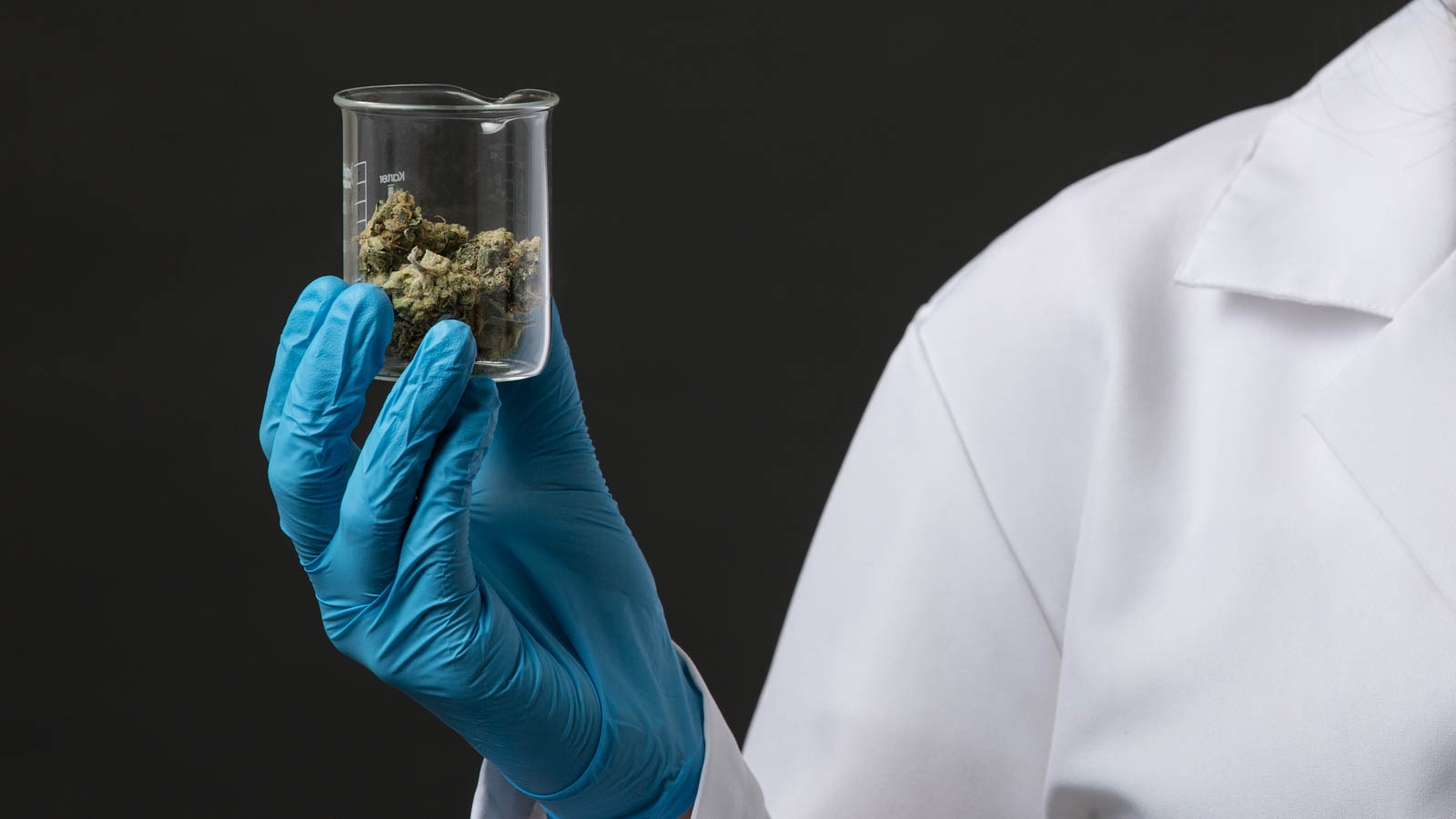
Pursuing a new job can be both an exciting and nerve-wracking experience, but for cannabis users or anyone considering using cannabis, it can also induce the gut-wrenching fear of an unexpected drug test followed by a frantic search for quick ways to do a marijuana cleanse.
Even in states with medical or adult-use cannabis legalization in full swing, some jobs still maintain stringent drug policies that forbid employees from consuming cannabis on their own time.
Having advance notice of an upcoming drug test may give you enough time to take a tolerance break and abstain from consuming, regardless it’s important to understand how THC operates throughout the body and how to healthily and effectively move cannabinoids out of your system.
How Does THC Move Through the Body?
You might have heard rumors that cannabis can stay in your system for days, weeks, or maybe even months, but the way THC travels and interacts with the body paints a slightly more complex picture.
If cannabis is smoked or vaporized, THC enters the bloodstream from the lungs and goes directly to the heart, where it is then pumped throughout the body to the two types of cannabinoid receptors found in the human body.
“THC travels in the blood to the CB1 receptors located in the brain and central nervous system, and the CB2 receptors located in the spleen and immune system,” said Itzhak Kurerk, Ph.D., CEO and co-founder of Cannformatics, a Northern California biotech company researching improvements to medical cannabis.
THC molecules binding to the cannabinoid receptor.
Every time the blood circulates throughout the body, a certain portion of THC passes through the liver. When THC is broken down in the liver, it forms at least 80 different metabolites, including 11-hydroxy-THC (11-OH-THC) and 11-nor-9-carboxy-THC (THC-COOH), both of which are inactive forms of THC that remain in the body far longer than active THC. Some of these metabolites, such as THC-COOH, are stored in body fat and gradually eliminated from the body through urine and feces.
“Tests for cannabis consumption mainly detect a metabolite of THC found in urine,” Kurek explained. “This metabolite [THC-COOH] is a result of the detoxification process in the liver by cytochrome P450 enzymes and further oxidation.”
When cannabis is ingested in the form of an edible or capsule, THC enters the bloodstream through the walls of the stomach and intestine. THC will travel directly to the liver where a substantial amount is eliminated or metabolized before the cannabinoid receptors are activated. After that, the remaining THC and its corresponding metabolites are put into circulation by the heart, where they both reach the brain.
So, contrary to what some might think, most cannabis drug tests aren’t only specifically looking for THC, but also metabolites such as THC-COOH that are created as the cannabinoid is rapidly broken down in the body.
Types of Drug Tests
Currently, there are drug screening methods designed to detect the presence of THC and THC metabolites in urine, blood, saliva, and hair.
Urine
A urine test is the preferred method used to screen for cannabis use, as this is the recommended test by the Substance Abuse and Mental Health Services Administration (SAMHSA), a branch of the U.S Department of Health and Human Services that creates drug testing standards for government employees.
A 2012 study published in the Iranian Journal of Psychiatry explained why urine tests are more effective than blood, saliva, or hair. “Urine is the preferred sample because of higher concentration and longer detection time of metabolites in it. Moreover, urine can easily be sampled,” the study stated.
Urine drug tests have a specific sensitivity regarding the cutoff concentration of THC-COOH, the benchmark used to determine the results of the test. While the cutoff point can generally range from 15 nanograms per milliliter (ng/mL) to 100ng/mL, the most common cutoff used for urine tests is 50 ng/mL, which is the value recommended by SAMHSA. This cutoff concentration determines the timeframe that a drug test will show up positive or negative for cannabis use. To fully grasp the finite scope of this cutoff limit measurement, consider that a nanogram is one-billionth of a gram, while a milliliter measures fluid volume equal to 1/1,000 of a liter. In the case of a marijuana drug screening, the test results would be positive if the amount of THC metabolites in the sample exceeded 50 ng/mL.
Blood
The researchers from the same 2012 study also stated that blood tests can only detect cannabis use a few hours after consumption.
“Maximum delta-9-THC plasma concentration was observed approximately 8 minutes after onset of smoking, while 11-OH-THC peaked at 15 minutes and THC-COOH at 81 minutes. This delta-9-THC concentration rapidly decreases to 1-4 ng/mL within 3-4 hours,” the study stated.
Saliva
Cannabis use can also be detected in saliva, but this also has a more limited window. A 2014 review on cannabinoids in oral fluid found that THC could be detected in occasional users one to three days after use, while saliva in chronic users could be detected up to 29 days after use.
Hair
Hair tests are the most sensitive type of drug tests, and can detect THC and THC-COOH up to 90 days after consumption. But these tests have proven to be inaccurate, and even non-consumers could trigger a false positive if they come into contact with a cannabis user. A 2015 study published in Scientific Reports, bluntly titled “Finding cannabinoids in hair does not prove cannabis consumption,” stated: “At first glance, differentiation of the route of THC-COOH incorporation into hair seems irrelevant as long as positive THC-COOH findings in hair require THC uptake by the individual under investigation. However, considering the presence of THC-COOH in sebum/sweat, a transfer to other persons’ hair is possible.”
How Long Does it Take for THC to Move Out of Your System?
As for the question of how long THC can be detected in your system, it depends not only on the type of drug tests, but also relies on a variety of individual factors, such as the consumer’s metabolism and amount of cannabis used.
“How long cannabis stays in your system is still an open question, and depends on many factors,” Kurek explained. “Experiments on frequent cannabis users have found residual THC can be detected for 5-13 days post-consumption.”
There are a variety of factors that might impact the amount of time that THC will stay in your system, including:
-
- Dosage: The greater the amount of THC, the longer it will take the body to detoxify and excrete THC and its metabolites.
- Frequency of use: How much and for how long does a consumer use marijuana?
- Genetics: People inherit different variants of the cytochrome P450 superfamily of enzymes, which modify THC in the body resulting in excretion in the urine, according to Kurek.
- Sex: Some studies have shown that men who smoke marijuana may have higher circulating levels of THC than women.
- Weight: The more body fat the cannabis user has, more THC metabolites are stored in the body and for longer periods.
- Metabolism: What’s the rate at which the body can eliminate the presence of cannabis from the system?
Although we’ve established that there’s no clear cut answer on how long it takes to get THC out of your system, past research on THC detection methods allows us to estimate the time it takes to cleanse the body of marijuana.
A 2005 review by Paul Cary, director of the Toxicology and Drug Monitoring Laboratory at the University of Missouri, found that while detection times in excess of 30 days do occur in some cases, they are largely an exception. The study acknowledges the various factors that determine how long THC metabolites remain in the body, but also provides “practical cannabinoid detection guidance” to offer a general idea of how long marijuana will stay in an individual’s system.
“Based upon recent scientific evidence, at the 50 ng/mL cutoff concentration for the detection of cannabinoids in urine (using the currently available laboratory-based screening methods) it would be unlikely for a chronic user to produce a positive urine drug test result for longer than 10 days after the last smoking episode,” the study stated.
At a lower 20 ng/mL cutoff concentration, the study also states that it would be uncommon for a chronic marijuana smoker to produce a positive urine drug test result longer than 21 days after consumption. For those who only use cannabis occasionally, the review states that it would be unusual for cannabinoids to be detected in urine three to four days after consumption at the 50 ng/mL cutoff level. For one-time marijuana use, the most stringent 20 ng/mL cutoff concentration point shouldn’t detect cannabinoids after 7 days.
Using a specified cutoff concentration point and time frame, drug testing laboratories are essentially able to look at levels of THC metabolites and figure out the last time the subject used cannabis.
“If the lab quantitates how much THC-11-hydroxy or THC-11-carboxy is found, that can be used to date when your last use of THC was, approximately,” explained Dr. Joseph Morgan, Senior Medical Director at Onconova Therapeutics, Inc., a clinical-stage biopharmaceutical company focused on developing small-molecule drug candidates to treat cancer.
“In other words, somebody who tests for no THC, no 11-hydroxy-THC, and a small amount of 11-carboxy-THC [THC-COOH], they can reliably say they were not stoned at the time of the test, and most likely their most recent use was at least a week before, possibly even one or 2 months before,” he added.
While these guidances help construct a framework for the court system and employers to follow, random drug screenings have a tendency of catching cannabis users by surprise. In the event you have a surprise drug test coming up and you’re unsure whether you still have THC in your system, it’s possible to give your body a marijuana cleanse that is legal and healthy.
Easy, Ethical Ways to Do a Marijuana Cleanse
It might be hard to admit, but the most effective way to give your body a marijuana cleanse is simple: Don’t consume any cannabis for one to three months. If abstaining from THC is not an option for you, know that because the most common type of drug test is a urine screening, the terms “marijuana cleanse” or “detox” typically refer to cleaning THC metabolites out of urine until they’re undetectable.
First, don’t try to cheat a drug screening under any circumstances, especially not by purchasing fake urine or other strange products that could get you into trouble,” Morgan warns of the risk of using products that supply fake chemical urine. “If you’re found doing that, then they’ll know you’re obviously guilty of something,” he said.
There are plenty of detox products that claim to assist with a marijuana cleanse, but keep in mind that these detox methods may not be 100% effective. One popular way to detoxify the body is by using bentonite clay, a clay made from volcanic ash that is purported to absorb toxicants, chemicals, and other impurities from the body. It can be used internally by mixing some into a glass of water.
Outside of detox formulas, there are other effective practices you can integrate into your daily routine. Focus on things like physical health, vitamin and food intake, while also recognizing how THC metabolites enter the urine. Morgan added an important caveat, explaining that exercising a day or two before a drug screening could cause THC-COOH to be released from fat cells into the urine stream.
“Try to be healthy and not fat, be well-hydrated, but don’t exercise vigorously the day before or the day of your drug test,” Morgan explained.















